I love designing adventures! If you’re like me, there’s nothing better than creating a world with words, imagining a maelstrom of conflicts and possibilities into which an unsuspecting group of characters can be thrust. As the words tumble onto the page, the excitement of delivering a great game experience for the players leads me to a deluge of questions and doubts: will this adventure challenge them, delight them, make them think, make them feel, or otherwise deliver on the goals that I set?
Creating an adventure can be one of the greatest joys for a D&D fan, but it can also be challenging and frustrating. With so many great published adventures available, a DM can run campaigns for years and never once have to do more than make a few tweaks. However, seeing the players react to a scenario that you pulled from your own imagination can produce a rush like no other.
Fighting through the struggles of the creative process can be treacherous and frustrating, but the challenge is not insurmountable. I hope that what follows—in this article and in future ones—is a guided tour of the adventure-creation process. I want to walk with you along this path, because I have trod it many times myself, helping others see the wonderful sights and navigate the hidden pitfalls. More importantly, each time I take the journey, I learn something new myself. This is the first part of a much larger series, one which will lay the groundwork for all future installments.
Your Humble Guide
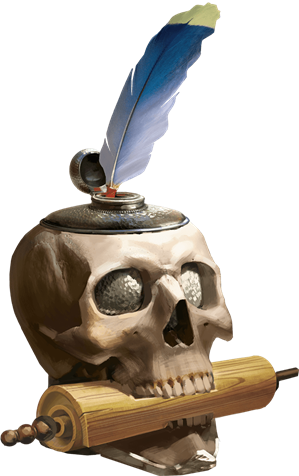 I’ve been running D&D games for almost 40 years, and creating my own adventures for the duration. I’ve been a professional adventure designer for the past 20 years, working for Wizards of the Coast and other RPG companies. If you count my experience being a writer, editor, producer, and administrator for organized-play campaigns like D&D Adventurers League, Living Forgotten Realms, Xen’drik Expeditions, and Living Greyhawk, you could say that I’ve written or been a DM for tens or even hundreds of thousands of players.
I’ve been running D&D games for almost 40 years, and creating my own adventures for the duration. I’ve been a professional adventure designer for the past 20 years, working for Wizards of the Coast and other RPG companies. If you count my experience being a writer, editor, producer, and administrator for organized-play campaigns like D&D Adventurers League, Living Forgotten Realms, Xen’drik Expeditions, and Living Greyhawk, you could say that I’ve written or been a DM for tens or even hundreds of thousands of players.
Those experiences have taught me a great deal about the game, the people who play it, and the process of creating within it. Much of what I’ve learned has come at the expense of getting things wrong. Many times over! Whether I am writing or designing or developing or editing, however, I am always looking to learn the next lesson, hoping to find the new nugget of truth and wisdom that I can carry forward into my next project.
And that’s what brings me to this point today. The fine folks at D&D Beyond asked me if I would be interested in writing a series of articles on adventure design. As I began to outline what would go into such a series, the inestimable Todd Kenreck had a brilliant idea: instead of just talking about how to create an adventure, why not actually create one, step-by-step and piece-by-piece, as I talk about each of the topics.
And so, intrepid adventure designers, that is what we’re going to do! Through the next several articles, I’ll discuss components of adventure design, and along the way we will create an adventure together. I’ll bring up topics and set us on the path, using comments from readers to guide later parts of the series. When we are finished, we’ll have a good strong outline, and maybe even a few complete encounters, from an adventure.
Charting the Course
The most important aspect of adventure design to remember—and to embrace—is that constraints on design are not antithetical to creativity. Self-constrained design is, in a nutshell, the crux of creativity. With approximately 200,000 current or obsolete words in the English language, and even more words when you throw game terms and other fictional fantasy elements into the mix, you want to do everything in your power to gracefully and elegantly limit your choices while not harming the aesthetic or functional value of your work product. That is best accomplished by constraining yourself.
In RPG adventure design, that self-constraint can take many forms. First, you can work within the time-tested and effective structures that have come before. For example, all adventures generally have a few particular sections that appear somewhere in the text. The names and locations of these sections may vary from product to product, but they all contain similar vital information. Adventure Background is one example. In the Adventure Background, we know we are going to provide the reader—and ostensibly the DM who is running the adventure—important information regarding what happened before the action of the adventure takes place. (We’ll talk more about the best way to handle Adventure Backgrounds in a later article.)
Another way to constrain the scope of your work in adventure design is to pick a theme or two that can act as a focus for your efforts. Think of these themes as “creativity magnets,” which can draw ideas out of your mind and onto the page, always driving you in a particular direction. These themes can steer the plot of an adventure, but they are much more powerful that just story beats or plot points. For example, in an adventure I wrote called Defiance in Phlan, one of the important themes was dragons. Yet a dragon does not appear in the adventure at all.
What kept my momentum moving forward during the design of that adventure were draconic themes and details. If I was ever stuck for a detail or a direction, I just focused my mind on dragons, and inevitably something came to me. Because I was focused on that one motif, what came to mind fit nicely with other details, creating a more coherent mosaic from the disparate pieces. Did I need to describe a statue? It was a dragon statue. Did I need a color? It could correspond to a chromatic dragon. Did an NPC need details? She was a merchant who dealt in dragon artifacts.
Of course, the most powerful and useful constraint is the oft-mentioned but sometimes-scorned outline. If you outline your adventure, you remove so much stress and friction from those mental gears, freeing them up to move immediately to the details of your creation. The brilliant part of outlines? They can be malleable! Once you get deep into the word mines, you might strike a completely different vein of gold. It’s fine to scrap the old outline and follow that new path, because your new ideas already have constraints of their own, which allow your easy access to the story that unfolds before you.
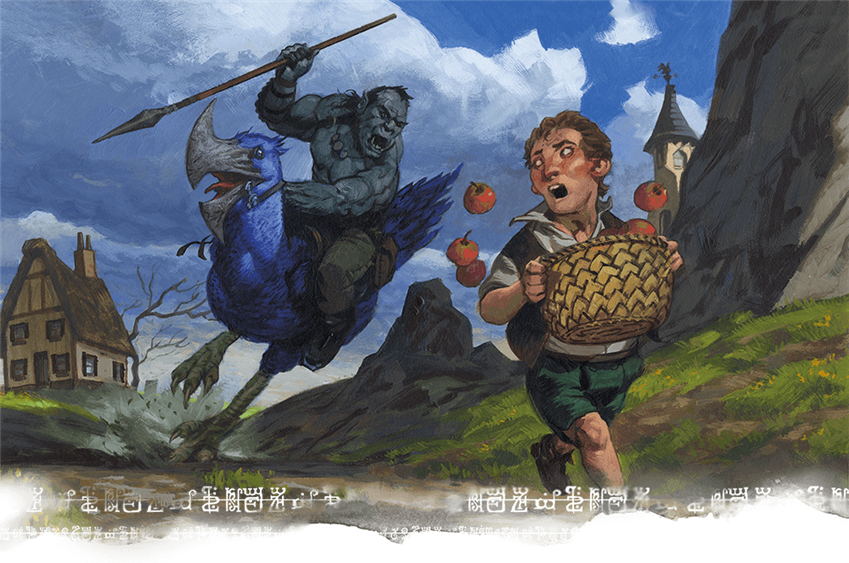
Accept Your Own Gifts
That vein of gold I mentioned above is another aspect of the creative process that bears mentioning early (and often). As we create, new pathways in our brain open up to us. We make connections. We get inspired.
A writing teacher from my past called these writerly inspirations “gifts to yourself.” You might be writing along and suddenly you have a mental flash. This could be a character, or an idea for a later encounter, or even just a word. Don’t ignore those flashes. Make a note of them somewhere that you can return to: an index card, a sticky note, a separate file, or whatever works for you that doesn’t involve too much time or effort. Then quickly get back and finish your original thought. When you reach a point where your current reservoir of writing taps itself out, go back to your notes and examine your gifts. Figure out why you might have had that flash of inspiration, and, more importantly, ruminate on how those new pieces fit into what you are working on.
Those gifts may come because your mind has already chosen a theme, or has fixated upon a new theme, and you didn’t realize it until the words accidentally appeared in your mind, or even on the page. Your subconscious mind is always working on a different level, and at a different pace, than your conscious one. These ideas may help you during your initial design, or they may be something that informs and instructs your revisions of your work. They may also solve a problem that you were having with a different part of your adventure.
Recognize Your Strengths
Unless you possess da Vinci-like genius exhibited by only a handful of people (e.g. Christopher Perkins and Jeremy Crawford), you likely have strengths and weaknesses in any project you undertake. Adventure design taps a variety of skills, ranging from writing descriptions to doing math to drawing maps, and many other tasks as well. Figure out what you are good at, and more importantly, what part of the process is most natural to you. Creating maps or other art can be difficult, but progress begets progress. If you are working on something that is not easy for you, and you cannot push through some barrier you face, move back to tackle something that is easy for you, and find a groove there. The forward progress in an entirely different area can sometimes clear away mental barriers, or give you some gifts that you can take to the task that is harder.
For me, mapping is terribly difficult. I don’t have a steady hand. My brain does not process spatial relationships well. Writing a typical adventure tends to result in dozens of crumpled sheets of graph paper littering the floor around my desk. I do, however, love to imagine scenes and put them into words. When I reach a frustration point with my mapping, I stop and attempt to use words to describe the rooms I am trying to draw. What’s in them? What are the creatures in the room doing? What features would adventurers first notice?
When I get those details painted on the page in words, it gives me the focus (and quite honestly, the courage) to go back to the graph paper and reengage the stubborn part of my brain that tries to draw a 10-foot by 10-foot room that is somehow supposed to contain seven Large-sized creatures.
I have heard many other content creators talk about this concept in other ways. Many creators love the math of adventure design: how many creatures of a particular challenge rating are needed to make this encounter hard or that encounter deadly? What creature’s ability, when paired with another creature’s abilities, add a little more spice to a fight? How much or what kinds of treasure will excite a group of players without unbalancing the campaign? These questions require a different cognitive process than, say, describing an NPC or creating a puzzle. Yet these processes can inform each other, unsticking a stubborn mental cog.
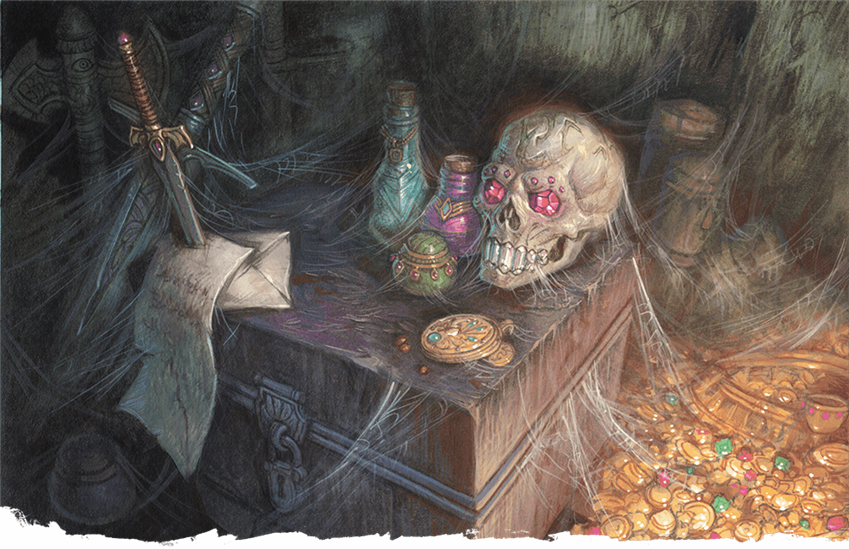
Whither from Here?
I hope the discussion so far has resonated with you, whether you want to be an adventure designer, DM, or just want to know a little more about the hobby that we love. Over the next few weeks, we’ll look at discrete aspects of game and adventure design, while at the same time putting those lessons into practice, creating pieces of an adventure that will come together into a whole by the end.
Speaking of outlines, here is a sneak peek at what topics we’ll be discussing over the course of the series. Since I hope to keep the discussion organic and flexible, there is always a chance to topics will be added, some may be combined into a single topic, or a few might be deleted entirely. But such is outlining!
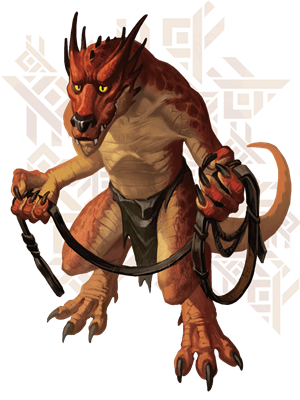
Frameworks for Adventures
- Creating an outline for an adventure, thinking about the presentation of the material in terms of the adventure scope, adventure length, adventure audience, its placement with a large campaign (or not), and more.
Plot Hooks and Opening Scenes
- An in-depth look at how to craft and implement adventure plots hooks and the opening scenes of adventures.
- Common mistakes that designers make when introducing an adventure.
- How to leverage existing game elements like backgrounds or factions to make hooks work better in an adventure.
Encounters and the Three Pillars
- A look at encounters as the building blocks of adventures.
- How to put encounters together, link them, and fit within the frameworks discussed in the previous article.
- How encounters relate to the three pillars of play: roleplaying, exploration, and combat.
- Working with the new Encounter Builder release for D&D Beyond to make it work for people who use the platform!
Boxed Text
- Dissecting boxed text, looking at how to write it and how not to write it.
- When it’s needed and when it’s not.
- Address the heated debate in design circles about whether it is needed at all!
- Discussion on details of setting, and how to find the right mix of putting in fun, flavorful, relevant details without overwhelming the DM.
Encounter Flow
- Examine the art and the craft of putting together encounters in a way that leads to organic, fun, and challenging game play.
- Touch upon the concept of story beats, and how to use different kinds of beats to keep the players happy and engaged.
- A general discussion of narrative structure, and the concepts of short and long rests as a narrative device as well as a game mechanic.
Rewards in Adventures
- How to creating adventures with rewards in mind: experience points, milestones, wealth, magic items, levels, and other kinds of rewards.
- Highlight the risks inherent in giving out too many rewards to soon, how to pace yourself, and alternate rewards that players will love that won’t unbalance your game.
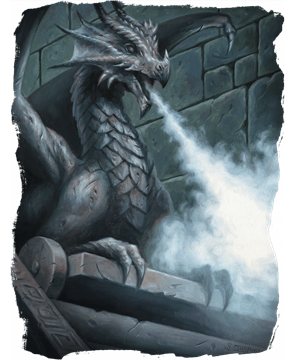
Challenges, Resolutions, and Consequences
- How to create challenges with the tools a DM has at hand: monsters, traps, hazards, obstacles, puzzles, and character choices.
- Look at how to allow different methods of resolution, and determining consequences for success and failure of those differing methods.
Thinking Like a D&D Designer
- A look at what it means to create D&D content, specifically adventures, in the larger sphere of the hobby.
- It provides tips on good writing habits, ways to make better use of your design time, and steps you can take to up your design skills.
Proofreading, Playtesting, and Publication
- Illuminate the big steps necessary in going from writing for yourself to writing for an audience.
- Cover the concepts of playtesting with outside sources, as well as polishing the piece, getting maps and art, and thinking about the content from a marketing perspective.
Homework
The next article begins our adventure design in earnest, but I need your feedback! In the comments below, talk about your experiences with adventure design, whether for your own home game or for publication. What themes have you used to constrain your design? What gifts have you left yourself that heightened the power of your design? How do you tackle designing an adventure when the blank page stares back at you?
 Shawn Merwin's professional design, development, and editing work in D&D has spanned 20 years and over 4 million words of content, ranging from third to fifth edition. His most recent credits include the Acquisitions Incorporated book, Baldur’s Gate: Descent into Avernus, and Storm Lord’s Wrath. He is also the Resource Manager for the D&D Adventurers League’s Eberron: Oracle of War campaign. Shawn hosts a weekly D&D podcast called Down with D&D, and he holds an MFA in Creative Writing from Vermont College of Fine Arts. You can follow his ramblings and musing on Twitter at @shawnmerwin.
Shawn Merwin's professional design, development, and editing work in D&D has spanned 20 years and over 4 million words of content, ranging from third to fifth edition. His most recent credits include the Acquisitions Incorporated book, Baldur’s Gate: Descent into Avernus, and Storm Lord’s Wrath. He is also the Resource Manager for the D&D Adventurers League’s Eberron: Oracle of War campaign. Shawn hosts a weekly D&D podcast called Down with D&D, and he holds an MFA in Creative Writing from Vermont College of Fine Arts. You can follow his ramblings and musing on Twitter at @shawnmerwin.








-
View User Profile
-
Send Message
Posted Sep 23, 2019As mentioned in the article, it often helps to keep the theme or the bigger picture in mind. Is your campaign more of an "adventure of the week"-style where you have shorter adventures that are self-contained and have little to no connection?
Or are they intended to be more like chapters of an overarching plot?
That information would also be very helpful for others if you want ideas or suggestions for your campaign.
In general i also like to think of one or more kinds of enemy,monster,npc,place or something similar that i find cool or fitting (or sometimes even NOT fitting!) and then play the "how can that be"-game where i think about a story that explains its/their presence in that area.
I hope that helps!
-
View User Profile
-
Send Message
Posted Sep 23, 2019Somehow my comment was posted twice,so i deleted ohne to save space
-
View User Profile
-
Send Message
Posted Sep 23, 2019As mentioned in the article, it often helps to keep the theme or the bigger picture in mind. Is your campaign more of an "adventure of the week"-style where you have shorter adventures that are self-contained and have little to no connection?
Or are they intended to be more like chapters of an overarching plot?
That information would also be very helpful for others if you want ideas or suggestions for your campaign.
In general i also like to think of one or more kinds of enemy,monster,npc,place or something similar that i find cool or fitting (or sometimes even NOT fitting!) and then play the "how can that be"-game where i think about a story that explains its/their presence in that area.
I hope that helps!
-
View User Profile
-
Send Message
Posted Sep 23, 2019So I am relatively new to being a DM, I began Lost Mine of Phandelver with my friends (two years ago), and found myself with more players than the story was designed to handle. While cutting my teeth and learning how true the adage "no plan survives contact with the
enemyplayers" really is, I began to become fascinated with the ruins of Leilon. While we have yet to complete LMoP (work schedules went to hell for several of us), I have found myself playing a side campaign with my two most consistent players (thanks in part to Essentials Kit and sidekicks).My Leilon campain began with an outline, as you mentioned in the article; my theme had been simply ruined city full of obstacles. Overtime that grew into the idea that settlers, descendants of Leilon's surviving citizenry, had returned to reclaim it. From that NPCs began to be birthed into reality and their motives for being there (most good, a few bad). The PCs had to have a reason to be there as well, even if "killing monsters, get loot" was all they came up with. Then the outline went on to mention bases within the city, ideas of helping the settlers establish safe zones for agriculture, securing resources, and trade routes.
After the second session, I gifted myself an unseen conflict between residents of the ruined town (sewer dwelling kobolds) and an invading force (kuo-toas). Now my PCs are trying to secure an alliance instead of killing wild beasts to secure an area for a wheat farm. And a planned resource run has been slowly mutating into [what I hope will be] a bit of a high seas jaunt.
!!! And listening to your players in session is also great for inspiration! Both players have been talking about re-establishing a smithy and controlling a warehouse to ship/receive from when the town is re-established. That's got me wondering how I can use info from the Acquisition's Inc. source book to spice up the game.
The kicker here is I planned that these events have already happened or are still happening when the LMoP adventurer was happening. So news of events there could be readily known or discussed when the other campaign happens to convene. And, yes, I am willing to allow for the [currently unforeseeable] possibility that these two find the mine before the other group gets to it. But THAT, is a whiles away.
-
View User Profile
-
Send Message
Posted Sep 23, 2019I can't wait for the rest of the series! It looks very promising and should help me and all the other DMs who are writing their own adventures.
-
View User Profile
-
Send Message
Posted Sep 23, 2019This is an exciting development! I'm an English teacher, and I've always wanted to write an adventure, but I never really knew the steps I needed to get there. I can't wait for more in this series!
-
View User Profile
-
Send Message
Posted Sep 23, 2019So excited for this series of articles, Shawn.
I’m only just beginning to design adventures professionally. I have a far greater understanding of story structure as pertains to novel writing. But looking at the adventures that I’ve enjoyed running the most, I have extracted two principles that I try to bear in mind. One is that for every encounter, there should be multiple ways of moving forward, both through combat and. In non-combat role-playing solutions. The other is that whatever the players’ agenda is, look for ways to introduce rival groups or entities who each have their own competing/complimentary agendas.
Can’t wait for the next installment!
-
View User Profile
-
Send Message
Posted Sep 23, 2019When I design adventures or campaigns, I usually work on three different "buckets":
I usually start with the plot bucket and jot down a very short script/synopsis (often in the form of a graph) with the main scenes I know I likely want to put in the adventure.
It's the easiest way to start for me because I almost always play D&D with the same people and I know quite well what they expect from a D&D adventure.
But even if that's not the case, I think that starting with a known, battle tested general structure helps both with easily overcoming the "blank page issue" and with finding the spots where you could introduce changes and twists (which are needed if you don't want to play the same adventure over and over again - but keep in mind that some people do want that actually).
From there, I start thinking about where that plot could take place and begin sketching elements of the setting.Generally speaking I start with the place where the adventure begins and then I keep "spiralling out" expanding the map.
Quite often, the creation of a place "guides" me to creating other places connected to it (e.g. big city with river -> river spring -> mountain -> lost caves) and this can expand or even completely change the script.
Moreover, as I begin outlining these places, NPCs and items and other mixed ideas start coming to my mind, which I put in the third "bucket".
Finally, whether I am working on a place, a character or a scene, I always try to associate a music to it.
I have studied piano for many years and music is a very important part of my life, but I am convinced that everyone can benefit from this, even without a strong musical background.
I think that building and keeping in mind a "soundrack" of the adventure really helps with the cohesion of the story, and it's really easy to come up with an ispiration if, for example, you focus on how a place sounds or on the "main theme" of a character.
PS:
this kind of articles are the precise reason this is one of the few blogs I keep following.
It's really hard to find these things outside here.
THANK YOU!!!
-
View User Profile
-
Send Message
Posted Sep 23, 2019Terrific article - looking forward to the rest of the series!
-
View User Profile
-
Send Message
Posted Sep 23, 2019If you want to continue with more of a pirate theme, I would suggest looking into pirate lore and including that in your adventure.
-
View User Profile
-
Send Message
Posted Sep 23, 2019Thank you so much for writing this! I literally just tried being a DM today! I'm so excited for the next articles like this. I just tried the opening hook from a different already written campaign and then improvised from there.
-
View User Profile
-
Send Message
Posted Sep 23, 2019I have just started making my own adventures recently. I usually don't think of themes, but will start doing those. The gifts I give myself, I usually don't write them down because I am away from my computer. Whenever I see the blank page, I think of what would make for an interesting BBG, then design the rest around him or her.
-
View User Profile
-
Send Message
Posted Sep 23, 2019Great article!
-
View User Profile
-
Send Message
Posted Sep 23, 2019I’m really looking forward to this series! I’m currently running a campaign that only goes up to level 11 (started with LMoP, going into SKT), and my players gave me a gold mine of backstories that I haven’t yet incorporated. I’m planning on homebrewing levels 12-20. Hope this helps that!
-
View User Profile
-
Send Message
Posted Sep 24, 2019Staring at the blank page on you laptop or on paper is daunting. Many times I have stared at that empty space for hours and wrote nothing to show for it. This is the most difficult part of writing an adventure, actually writing it. You have to take the time to sit and think and maybe not write at all. Just brainstorm or make an outline first. A few ideas on a scrap of paper is all you need to start something. Don’t get frustrated when you only write down a few character names or draw part of a map. If you keep doing it everything will come together.
And great job with this article. Excited to see the next one.
-
View User Profile
-
Send Message
Posted Sep 24, 2019We're going to have to wait a week for the next installment? I need it now!
Seriously, though, great read. I'm very much looking forward to this series. Even though I think I have a pretty solid concept of adventure writing, there's no such thing as knowing everything, and nobody ever really stops learning. Personally, I feel like I am very scatter-brained when it comes to design, but very narrow-minded when it comes to execution; that is, most of my adventure design is fairly open-ended, but once I actually get into running the game, deviation is difficult for me.
-
View User Profile
-
Send Message
Posted Sep 24, 2019This was a great read and I'm excited to follow up with it. I just finished playing through Out of the Abyss with my group as a player. After more than 2 years, we finished that campaign. Now I'm stepping into the role of DM, which I've done a little bit of before. This time, I started with a setting that I am also using for a fantasy book I'm writing. I came up with a rough outline but what really helped was coming up with the different factions and their motivations in my setting. The theme is a bit of a horror/Halloween setting but I've also got a bunch of great back stories to mix in too. My 2 favorite being from a samurai fighter and a gunslinger fighter. So there will be a mixture of Western and Eastern themes as well. The main theme is that although good and evil may appear foggy on the surface and it's hard to tell who is who, there is still a such thing as objective morals and real villains, even if they sometimes seem to make sense (think Thanos) their methods are not worth their motive. I'm basically throwing my players into a city in the middle of a struggle for power from internal and external threats alike. Another theme is the governments role in limiting its people's power through outlawing magical items and offensive spells within the city. My gifts have been many throughout the few years I've been dreaming up this setting, but my most notable is having an NPC who possesses an item that was used against one of my players in his back story, but he claims he stole it so my player has to figure out if he believes him or if he's the one behind the 'gun'. Another came in the form of having the gunslinger's father's journal discovered by mercenaries and then stolen by orcs who don't know it's worth. The gun designs it contains are now hidden away in some orc cave, thought invaluable by the creatures, maybe even scattered across the land for some reason I've yet to figure out.
-
View User Profile
-
Send Message
Posted Sep 24, 2019I look forward to reading more of this!
I am a new DM running my first true campaign and i have decided to run it for a few veteran gamers and my significant other. All good friends and all very different types of players so it has gone well so far but i have decided to, against all rational fear and self doubt that i have in my own creative ability, drop them all into a world i am building from the ground up utilizing a few of my favorite D&D tidbits to fill in a few gaps. Hopefully this article helps to break a few mental blocks I'm running into
-
View User Profile
-
Send Message
Posted Sep 24, 2019Good luck, I'm sure you'll do great
-
View User Profile
-
Send Message
Posted Sep 24, 2019My experience with adventure design has not been the greatest so far, and I believe that is due to rushing it and not giving it the time it needed. For example, I am also not very good at designing maps (yet!) and instead of taking the time to work on it I blew it off and figured I'd get it done when I needed to during the campaign. As you've probably guessed, that didn't work very well... or at all. I still don't even have a cohesive map of the world I've created and we've had at least 6 or 7 sessions now.
Anyways, I loved the article and can't wait to learn more about adventure design in the coming weeks! You don't know how I much I needed something like this after struggling so much in running my own campaign!